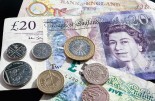Monex Europe: FX Intervention from Swedish Riksbank would be foolish
Monex Europe: FX Intervention from Swedish Riksbank would be foolish

- Vulnerabe housing market and SEK weakness has brought FX intervention from the Riksbank into scope
- Unlike the Riksbank’s FX intervention in 2016, the central bank won’t be selling SEK, but instead buying it
- This approach puts a hard ceiling on effectiveness as it is limited by the amount of FX reserves at the Riksbank’s disposal
- FX intervention from the Riksbank would only prove effective should it coincide with a fundamental SEK improvement
EURSEK has traded above its pandemic peak three times this year already (see Graph 1) and has threatened to reach its all-time high seen back in 2007 (11.79). The level of weakness in the Swedish krona at a time when inflation was still soaring caught the eye of the Riksbank’s new Governor Erik Thedeen, who back at February’s meeting explicitly outlined the central bank’s preference for a stronger currency.
In order to enable this, the Riksbank decided to hike rates by 50bps in February, outline a more hawkish rate path moving forward, and introduce more liquidity into the bond market to entice foreign investment inflows. Furthermore, within the meeting minutes (published February 20th), the Riksbank mentioned the value of the krona the most since 2010. This underscored how important SEK weakness was to policymakers.
While the Riksbank’s policy tweaks initially worked, with EURSEK trading 2% lower after the decision, it was just a month later when EURSEK once again broke through its pandemic peak. This time, jawboning from the new central bank governor didn’t prove successful, with markets instead concerned over the sustainability of the Swedish central bank’s hiking cycle given vulnerabilities in the housing market.
Ultimately, it wasn’t until financial stability risks in the US emerged and began to deflate interest rate expectations globally that EURSEK fell from its latest peak. However, with these risks largely contained, markets have since rebuilt their expectations of the ECB’s hiking cycle. This has once again pulled EURSEK back above the 11.44 threshold.
Having crossed the central bank’s line in the sand three times in as many months, and with housing vulnerabilities arguably capping how high the Riksbank can take interest rates without triggering financial stability risks, the prospect of continued SEK weakness has brought FX intervention from the Riksbank into scope.
Although there is precedence for the Board to formally open the door to FX interventions following the decision in 2016, we don’t think this is a credible policy avenue for the Riksbank. Unlike in 2016, the central bank won’t be selling SEK, but instead buying it. Thus, this time it has a hard ceiling on its effectiveness to intervene in markets as it is limited by the amount of FX reserves at its disposal.
As of this month, the Riksbank’s reserves amounted to EUR41bn (see Graph 2), equivalent to just one average days worth of SEK turnover in FX markets according to the latest BIS triennial survey. While the Riksbank has access to swap lines with the ECB and can access euro’s to sell to support its currency that way, ultimately its limited coffers means that it is likely to come to no avail.
In our view, FX intervention from the Riksbank would only prove effective should it coincide with a fundamental improvement in the currency’s profile. In this scenario, stealth intervention from the Riksbank would turbo charge a rally in SEK that already has a firm basis due to its better investment profile.
Without this, we think FX traders will try to make a quick dime off of the Riksbank’s ignorance—something the central bank looks like it wants to avoid given its decision in February was to find more credible avenues to support the currency.









